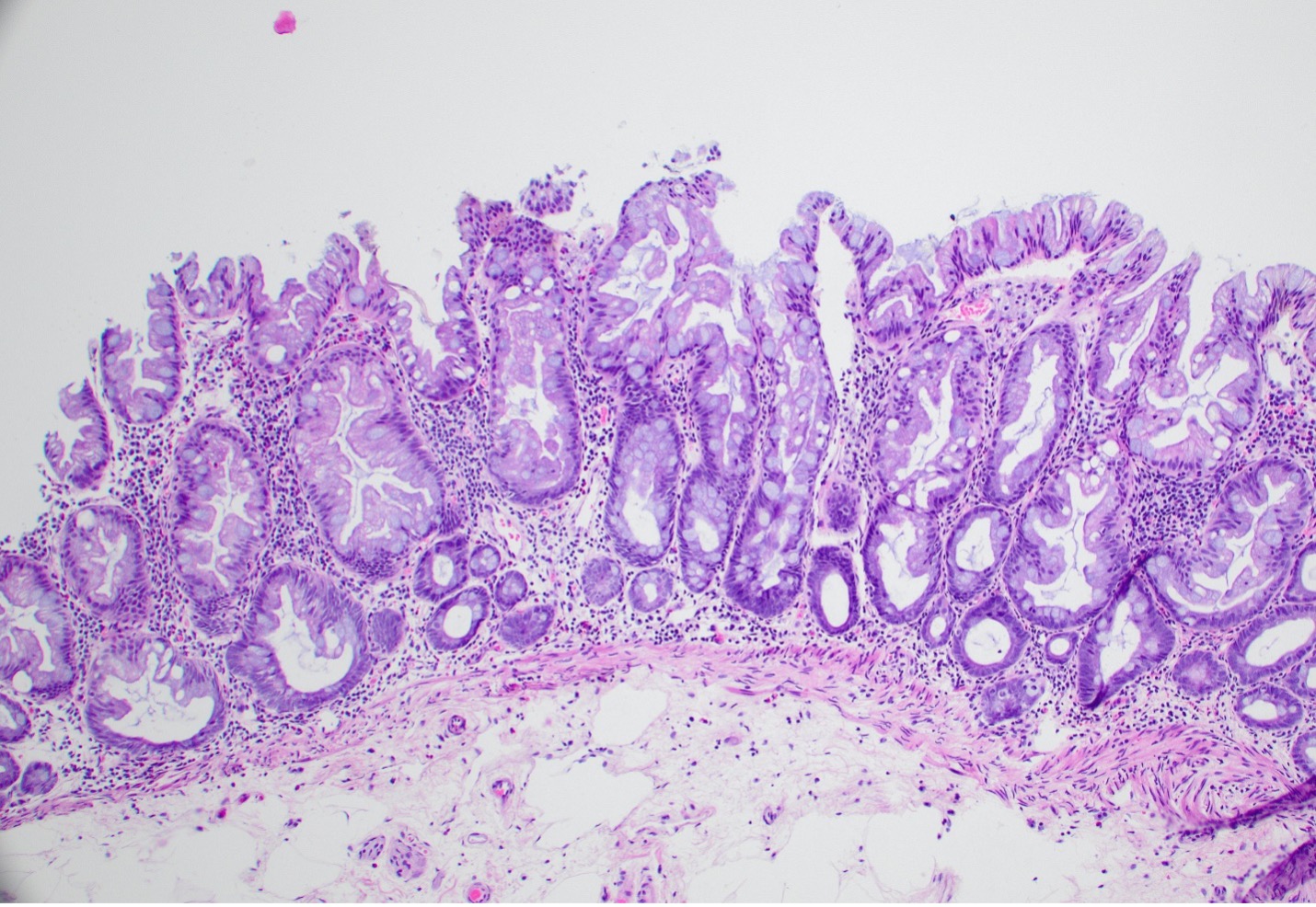Tuesday Poster Session
Category: Colon
P3747 - A Case of Serrated Polyposis Syndrome in Patient With Previous Hodgkin’s Lymphoma
Tuesday, October 29, 2024
10:30 AM - 4:00 PM ET
Location: Exhibit Hall E

Has Audio

Hyder Alikhan, BA
Cooper Medical School of Rowan University
Camden, NJ
Presenting Author(s)
Hyder Alikhan, BA1, Polina Gaisinskaya, MD2, Kathryn Zarnawski, MS3, Ronald Miick, MD1, Krysta Contino, MD4
1Cooper Medical School of Rowan University, Camden, NJ; 2Cooper Health Gastroenterology, Camden, NJ; 3Cooper University Hospital, Camden, NJ; 4Digestive Health Institute at Cooper University Hospital, Mount Laurel, NJ
Introduction: Serrated Polyposis Syndrome (SPS) is a colorectal polyposis syndrome where patients are clinically diagnosed with numerous serrated polyps throughout the large bowel. SPS can be rarely associated with some genetic abnormalities; however, most patients with SPS have no identifiable cause. We present a case of a patient with previously treated Hodgkin’s Lymphoma who was clinically diagnosed with SPS with no genetic abnormalities.
Case Description/Methods: A 64-year-old female with past medical history of metabolic dysfunction-associated steatotic liver disease, pancreatic insufficiency, dyspepsia, colon polyps, and Hodgkin’s Lymphoma treated at the age of 25 with unknown chemotherapy agents and neck radiation presented with change in bowel movements with intermittent diarrhea. Because of her previous colon polyps and lack of surveillance colonoscopy in multiple years, colonoscopy was performed with resection of 34 polyps. Pathology confirmed sessile serrated lesions (SSLs) in the ascending, transverse, and descending colon, and tubular adenomas in the rectum and hepatic flexure. A follow-up colonoscopy 4 months later due to piecemeal polypectomy revealed numerous additional SSLs in the ascending, transverse, and descending colon. She was recommended to undergo genetic testing for suspected SPS. A genetic testing panel of 91 genes was negative, including RNF43 and MUTYH which have both been identified as rare causes of SPS.
Discussion: SPS is a clinical diagnosis based on endoscopic and histologic findings that places individuals at increased risk for colorectal cancer as there is an increase in polyp production. This case is unique as this patient had developed SPS with no underlying genetic abnormality and was previously treated for Hodgkin’s Lymphoma (HL). There have been some studies and case reports that showed an association between SPS and previously treated HL with chemotherapy or abdominal radiation. However, more research is needed to demonstrate the link between HL and SPS along with how previous chemotherapeutic agents and radiation increases SPS risk. This case adds to the growing literature between the association of HL treatment and SPS and highlights the importance of surveillance colonoscopies, which may alter future screening guidelines for this patient population.

Disclosures:
Hyder Alikhan, BA1, Polina Gaisinskaya, MD2, Kathryn Zarnawski, MS3, Ronald Miick, MD1, Krysta Contino, MD4. P3747 - A Case of Serrated Polyposis Syndrome in Patient With Previous Hodgkin’s Lymphoma, ACG 2024 Annual Scientific Meeting Abstracts. Philadelphia, PA: American College of Gastroenterology.
1Cooper Medical School of Rowan University, Camden, NJ; 2Cooper Health Gastroenterology, Camden, NJ; 3Cooper University Hospital, Camden, NJ; 4Digestive Health Institute at Cooper University Hospital, Mount Laurel, NJ
Introduction: Serrated Polyposis Syndrome (SPS) is a colorectal polyposis syndrome where patients are clinically diagnosed with numerous serrated polyps throughout the large bowel. SPS can be rarely associated with some genetic abnormalities; however, most patients with SPS have no identifiable cause. We present a case of a patient with previously treated Hodgkin’s Lymphoma who was clinically diagnosed with SPS with no genetic abnormalities.
Case Description/Methods: A 64-year-old female with past medical history of metabolic dysfunction-associated steatotic liver disease, pancreatic insufficiency, dyspepsia, colon polyps, and Hodgkin’s Lymphoma treated at the age of 25 with unknown chemotherapy agents and neck radiation presented with change in bowel movements with intermittent diarrhea. Because of her previous colon polyps and lack of surveillance colonoscopy in multiple years, colonoscopy was performed with resection of 34 polyps. Pathology confirmed sessile serrated lesions (SSLs) in the ascending, transverse, and descending colon, and tubular adenomas in the rectum and hepatic flexure. A follow-up colonoscopy 4 months later due to piecemeal polypectomy revealed numerous additional SSLs in the ascending, transverse, and descending colon. She was recommended to undergo genetic testing for suspected SPS. A genetic testing panel of 91 genes was negative, including RNF43 and MUTYH which have both been identified as rare causes of SPS.
Discussion: SPS is a clinical diagnosis based on endoscopic and histologic findings that places individuals at increased risk for colorectal cancer as there is an increase in polyp production. This case is unique as this patient had developed SPS with no underlying genetic abnormality and was previously treated for Hodgkin’s Lymphoma (HL). There have been some studies and case reports that showed an association between SPS and previously treated HL with chemotherapy or abdominal radiation. However, more research is needed to demonstrate the link between HL and SPS along with how previous chemotherapeutic agents and radiation increases SPS risk. This case adds to the growing literature between the association of HL treatment and SPS and highlights the importance of surveillance colonoscopies, which may alter future screening guidelines for this patient population.

Figure: Sessile serrated lesion in the ascending colon demonstrating serrated crypt architecture and dilated flask-like basal crypts without cytologic dysplasia. H&E, 100x.
Disclosures:
Hyder Alikhan indicated no relevant financial relationships.
Polina Gaisinskaya indicated no relevant financial relationships.
Kathryn Zarnawski indicated no relevant financial relationships.
Ronald Miick indicated no relevant financial relationships.
Krysta Contino indicated no relevant financial relationships.
Hyder Alikhan, BA1, Polina Gaisinskaya, MD2, Kathryn Zarnawski, MS3, Ronald Miick, MD1, Krysta Contino, MD4. P3747 - A Case of Serrated Polyposis Syndrome in Patient With Previous Hodgkin’s Lymphoma, ACG 2024 Annual Scientific Meeting Abstracts. Philadelphia, PA: American College of Gastroenterology.
